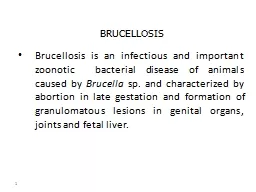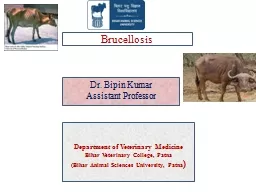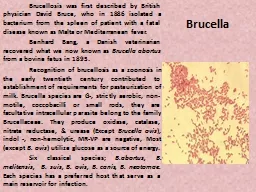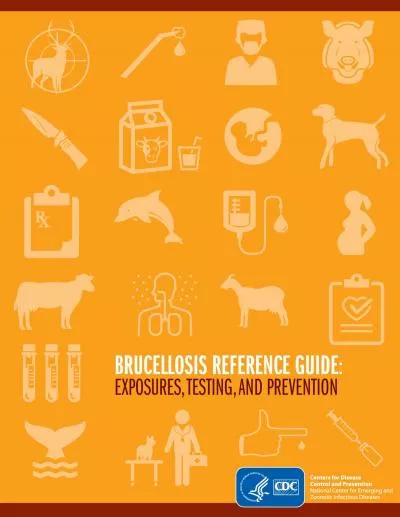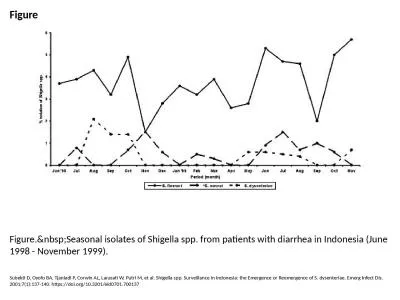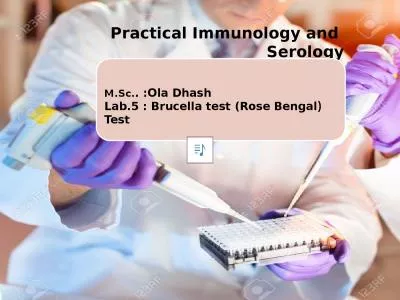PPT-Brucella spp. Agent Specific Training
Author : lindy-dunigan | Published Date : 2018-12-24
CDC Public Health Image Library 1928 httpphilcdcgovphilhomeasp Brucellosis Worldwide Brucellosis can be found worldwide More common in countries that do not have
Presentation Embed Code
Download Presentation
Download Presentation The PPT/PDF document "Brucella spp. Agent Specific Training" is the property of its rightful owner. Permission is granted to download and print the materials on this website for personal, non-commercial use only, and to display it on your personal computer provided you do not modify the materials and that you retain all copyright notices contained in the materials. By downloading content from our website, you accept the terms of this agreement.
Brucella spp. Agent Specific Training: Transcript
Download Rules Of Document
"Brucella spp. Agent Specific Training"The content belongs to its owner. You may download and print it for personal use, without modification, and keep all copyright notices. By downloading, you agree to these terms.
Related Documents









